Building the First “Black Mirror” Sequel: How Production Designer Miranda Jones Upgraded the USS Callister Universe
Back in Season 4 of Black Mirror, an enthusiastic programmer, Nanette (Cristin Milioti), gets trapped in a virtual-reality game by its creator and her boss, Robert Daly (Jesse Plemons). Shy and self-minimizing in real life, Nanette’s in-game clone is creative and confident enough to lead the rest of her colleagues, also trapped as crew by Daly on the starship USS Callister, out through a wormhole. Black Mirror picks up the thread with a sequel in Season 7, “USS Callister: Into Infinity,” with Daly dead and the starship’s crew fighting to survive against the multiplayer game’s millions of other players.
For production designer Miranda Jones (Trigger Point, Breeders), the sequel brought the chance to upgrade and further explore Daly’s starship, the in-game world, and Infinity’s offices, now taken over by Daly’s megalomaniac co-founder, Walton (Jimmi Simpson). Some of the show’s visual elements were inherited, like the characters’ improbably slim cell phones and the prevalence of clear Perspex details throughout the office’s hardware. But while the original episode’s design was rooted in loving Star Trek references (co-creator William Bridges is a fan), the sequel sees Nanette and her crew make it off the starship and onto the Infinity game’s multifarious planets. For Jones, that meant considering what Daly’s creations would look like, as well as imagining the garage locale where he first made it all happen.
Jones spoke with us about mirroring Nanette’s two worlds, incorporating practical elements into the props and builds, and using retro technology to make the future believable.
The ship and the office seemed to mirror each other. Was that intentional?
We directly connected things like the lifts and the movement around them. Charlie [Brooker] had inspired us in the script, and Toby [Haynes], the director, also loved those connections. But we did that deliberate echoing with all sorts of things, particularly when we saw Nanette in both places. And we’d done quite a lot with the upgrade of both spaces. The ship had been upgraded through Infinity, and the office had been upgraded through Walton’s ego.
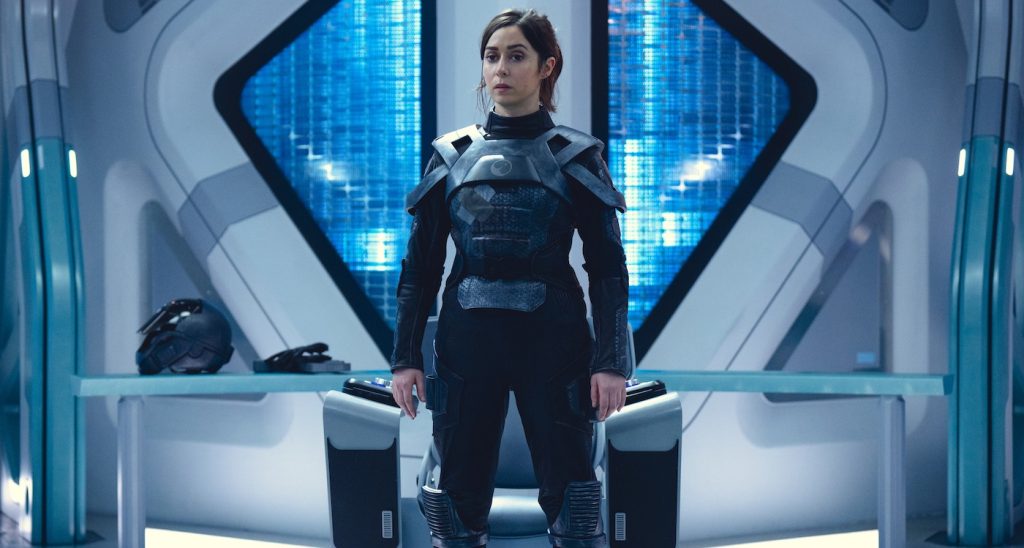
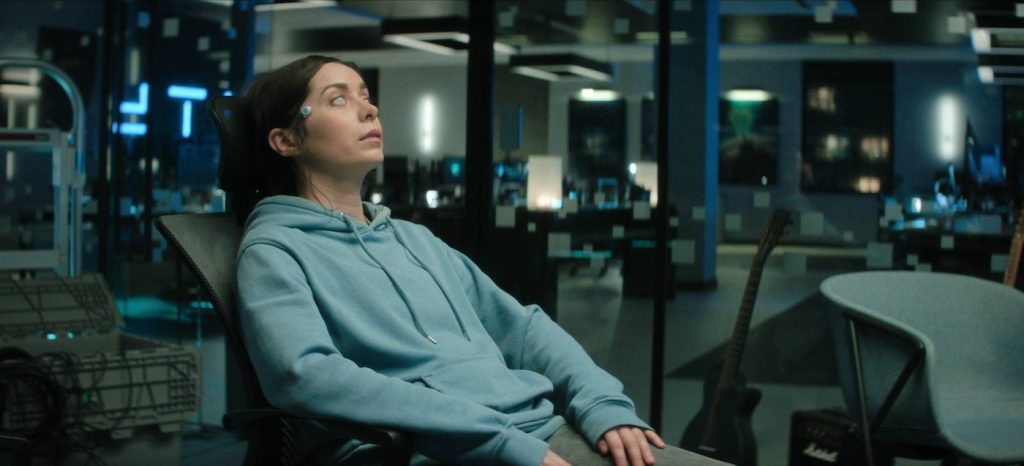
How did you want to change or update the locations from the Season 4 episode?
There’s a sort of homage to Star Trek in that first one, but we were very much into a game aesthetic in this one. But it was a game that had been created by someone working for years. You can look at some of the games out there, and they’re not as, perhaps, detailed as ours. We wanted to believe Infinity could really go for it. We wanted to add a lot more detail and finesse. We also had some extra things, like a weapons drawer, that didn’t exist before. The consoles had working parts to them this time. We spent quite a lot of time, partly to make the actors really enjoy it. I was standing on the shoulders of what had been done before, so great credit to Joel [Collins] and Phil [Sims, previous production designers], who had done the first one. But we had a lot of freedom to really, really upgrade it.
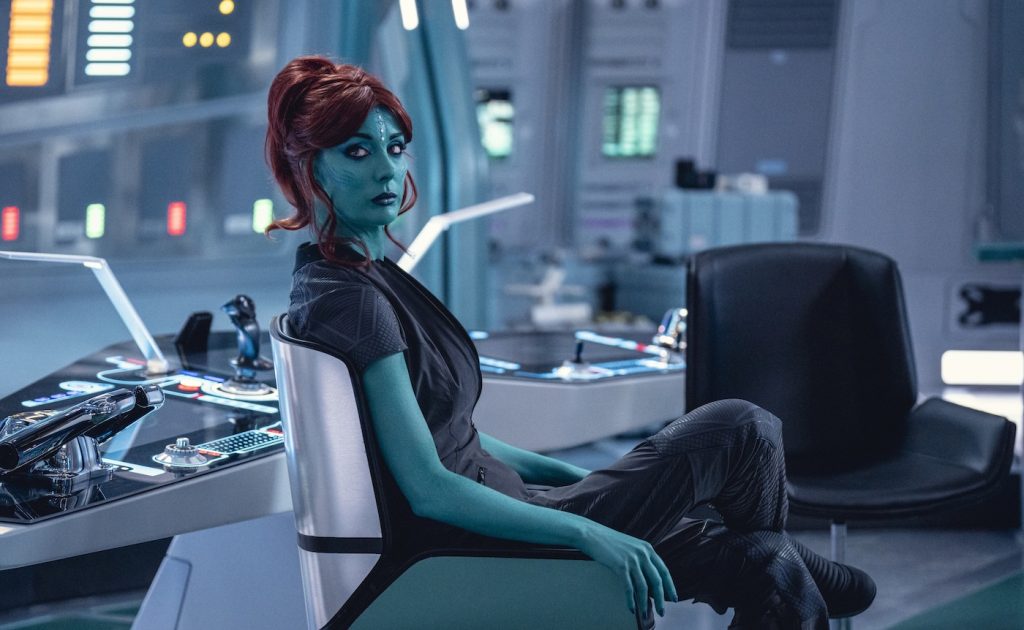
And how did you upgrade the office?
The first time round, it still felt like a startup, and I thought Infinity was making money, and Walton had a massive ego. My idea was to make it familiar to the audience so you knew we were still in Infinity’s offices, but Walton had knocked through to Daly’s office. We upgraded the lighting, and we just really went for it.
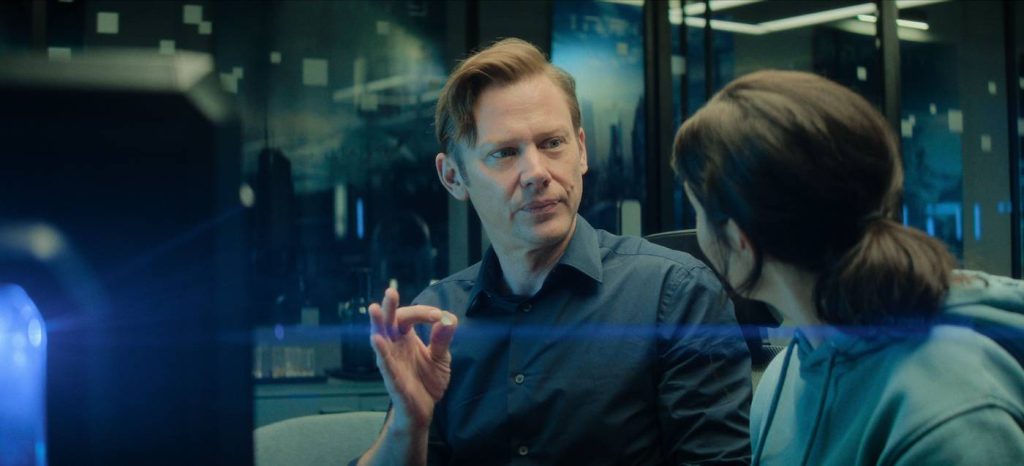
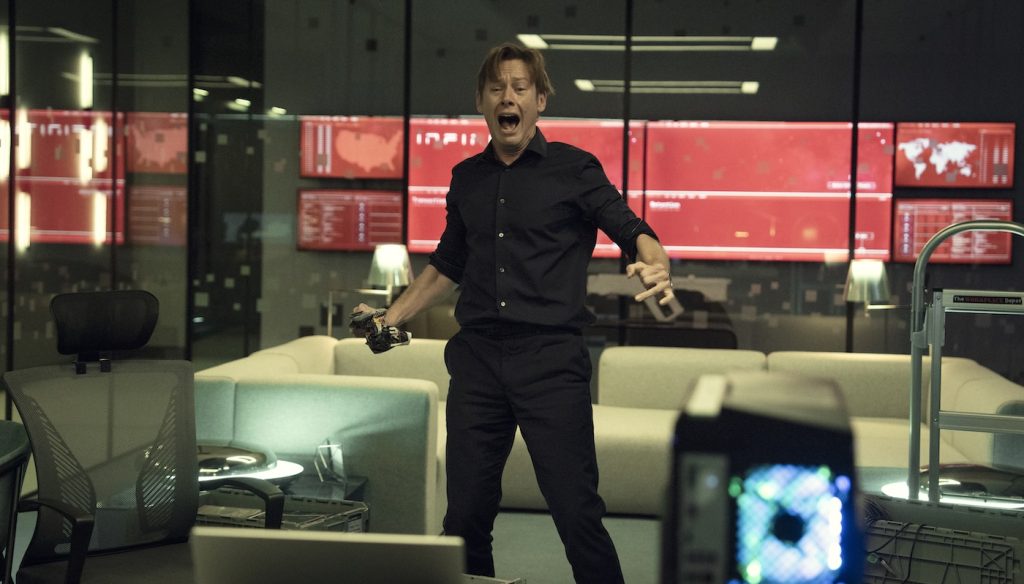
What was the approach to incorporating practical elements that function?
The ship took three months to build, so we had quite a lot of time to think about things. We had the consoles laid out in our offices in Ealing, and we kept bringing different things in to play with, and everybody had a go. The more we did, the more ideas popped out. It was very intentional, but as the ship was built, we all walked round it and more got added. Sometimes on the day, Toby would have an idea, and there’d be this mad scramble around trying to fulfill that great idea. It was a real mix. The guns this time really lit up. As you upgraded through the weapons, they were full of LEDs, and the triggers worked. Instead of adding them in post, the actors could see that happen. We definitely wanted to improve the functionality of everything.
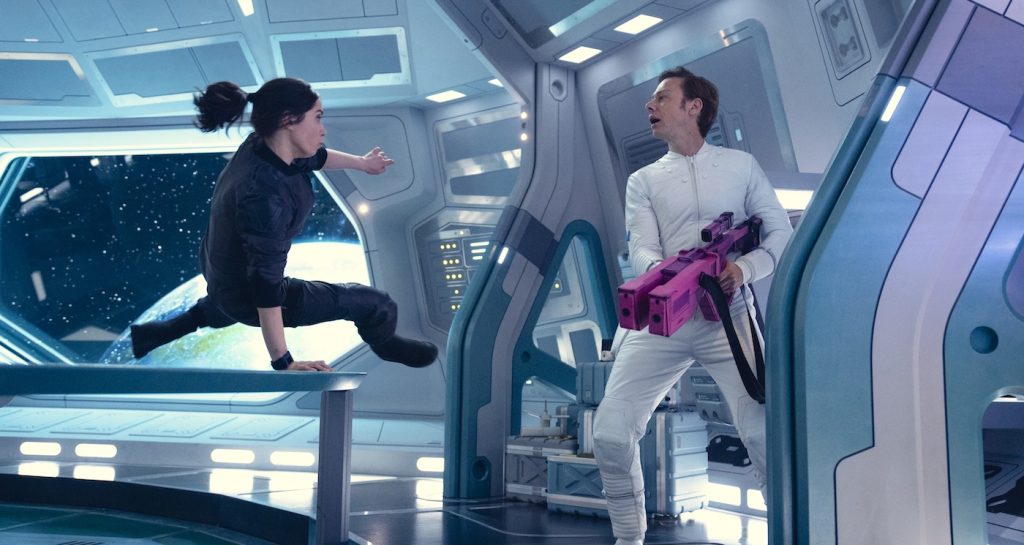
How did you approach the in-game locations?
Charlie would describe them, but then there was the matter of what’s available. We went down all sorts of different routes in how gamey to make them feel, how super real to make them feel. We went somewhere between the boundary of sci-fi and games. There was always an ice planet at the beginning of the script. At one point, we were going to go to Iceland, and then we looked at a slate mine in Wales that was possibly quite dangerous to film in at night. In the end, we built it. It changed so many times before we got to where we were. Then we always knew we wanted to do something green, and again, we thought about going abroad, but what we ended up doing was we went to Black Park and filled it with exotics and smoke. Then we needed a contrast, so we went to a copper mine in Wales. You didn’t need to punch the colors much to make it just look otherworldly, because it really is orange. We wanted to introduce a really contrasting color, so we made the creature’s blood blue. The aim was to make three very different planets for each character.
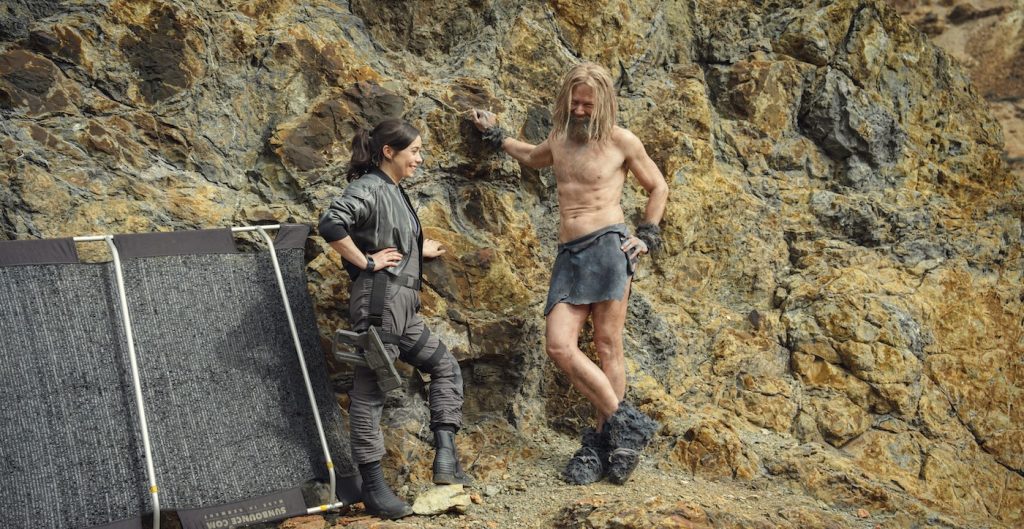
How did you approach Daly’s garage?
We obviously needed an exterior. We knew we then needed to match it to an interior that was very slightly bigger, and walls had to be removed for the stunts and things like that. So we spent quite a lot of time looking for something that could be California, and we ended up outside London in an estate with that style of house. We particularly liked the one on the sweep of the curve, but of course, that did not have the garage doors that we wanted. We had to put them in because we wanted the particular movement of that garage door, like a spaceship. And it needed to be that way, so that when Daly clicked his fingers, it ominously started to come down again.
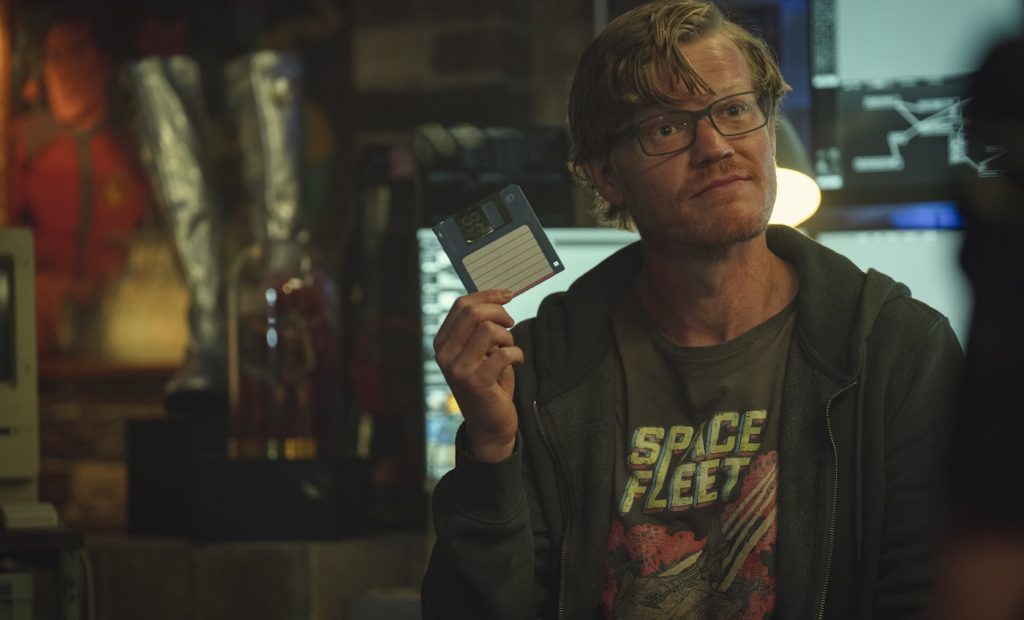
There are so many subtle signals that show that it takes place just into the future, but there are also retro elements. What was the approach there?
This comes from Charlie’s brain, the way we look at five minutes into the future. We can be quite linear with our decisions on things, and Charlie always brings in these different ways of looking at it. By introducing some of the more period items, it was a way not to explain exactly how Daly’s doing this, because that’s bonkers. It’s a floppy disk. Therefore, you accept it because if we had tried to invent the technology that can do that, we would have asked too many questions. When he was working in the real world, it was a bit like Warhammer, we had all sorts of little paints. And then he just expanded that to how he’d make planets. But it would still be very physical, even if he’s just doing it.
Black Mirror season 7 is streaming now on Netflix.
Featured image: Cristin Milioti is Nanette Cole in “Black Mirror.” Production Still Image. Courtesy Netflix.



